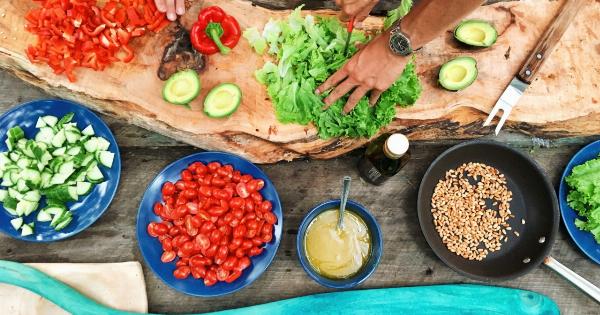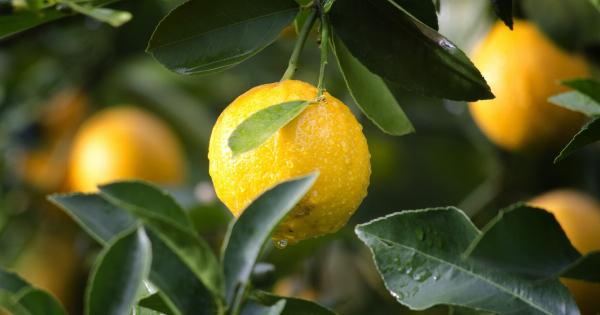Cholesterol is a waxy substance found in the cells of our body. It is produced by the liver and also obtained from certain foods we consume.
While cholesterol is essential for the formation of cell membranes, hormones, and vitamin D, high levels of cholesterol can pose a serious risk to our health. Elevated cholesterol levels can lead to the development of heart disease and increase the likelihood of strokes.
The Role of Diet in Cholesterol Control
When it comes to managing cholesterol levels, making smart food choices is pivotal. By incorporating cholesterol-lowering foods into our diet and avoiding those that contribute to high cholesterol, we can effectively control our cholesterol levels.
Let’s explore some of these smart food choices in detail:.
Fiber-rich Foods
Fiber plays a significant role in cholesterol control as it helps to reduce the absorption of cholesterol in the body. By including fiber-rich foods in our diet, we can lower our cholesterol levels.
Foods high in soluble fiber, such as oats, barley, legumes, and fruits like apples and citrus, are particularly beneficial in reducing LDL cholesterol (the “bad” cholesterol) levels.
Plant Sterols and Stanols
Plant sterols and stanols are naturally occurring substances found in plants that help block the absorption of cholesterol. They work by reducing the amount of cholesterol absorbed in the intestines.
Foods fortified with plant sterols and stanols, such as certain margarines, spreads, and yogurt, can be effective in lowering LDL cholesterol.
Healthy Fats
Not all fats are created equal. Including healthy fats, such as monounsaturated fats and polyunsaturated fats, in our diet can help manage cholesterol levels.
Foods rich in healthy fats include avocados, nuts, seeds, and oils like olive oil and canola oil. These fats can help increase HDL cholesterol (the “good” cholesterol) and decrease LDL cholesterol.
Omega-3 Fatty Acids
Omega-3 fatty acids are a type of polyunsaturated fat that have been shown to have numerous health benefits, including reducing inflammation and lowering cholesterol levels.
Cold-water fish like salmon, mackerel, and sardines are excellent sources of omega-3 fatty acids. For individuals who do not consume fish, omega-3 supplements can be considered.
Limiting Saturated and Trans Fats
Saturated and trans fats are the two types of fats that can significantly raise cholesterol levels. These fats are commonly found in processed foods, fried foods, fatty meats, and full-fat dairy products.
By minimizing the consumption of these fats, we can help keep our cholesterol levels in check.
Herbs and Spices
Adding certain herbs and spices to our meals not only enhances flavor but also provides cholesterol-lowering benefits.
Turmeric, garlic, ginger, and cinnamon are examples of herbs and spices that have been found to have positive effects on cholesterol levels. These can easily be incorporated into various dishes to promote cholesterol control.
Antioxidant-rich Foods
Consuming a diet rich in antioxidants can also contribute to cholesterol control. Antioxidants help protect the body from damage caused by free radicals and reduce inflammation.
Foods like berries, dark chocolate, green leafy vegetables, and nuts are abundant in antioxidants and can aid in maintaining healthy cholesterol levels.
Physical Activity and Cholesterol
While diet plays a crucial role in cholesterol control, it is important to note that incorporating regular physical activity into our routine can further enhance our efforts.
Engaging in aerobic exercises like brisk walking, running, swimming, or cycling can help raise HDL cholesterol and lower LDL cholesterol. Aim for at least 150 minutes of moderate-intensity exercise per week for optimal cholesterol management.
Lowering Cholesterol Naturally
Beyond making smart food choices, there are additional lifestyle changes that can assist in lowering cholesterol naturally.
Avoiding smoking and excessive alcohol consumption, maintaining a healthy weight, managing stress, and getting regular check-ups to monitor cholesterol levels are all integral parts of a holistic approach to cholesterol control.
Conclusion
By carefully selecting the foods we consume and incorporating smart food choices into our diet, we can effectively control and manage our cholesterol levels.
Remember to include fiber-rich foods, plant sterols and stanols, healthy fats, omega-3 fatty acids, and antioxidant-rich foods. Additionally, limiting saturated and trans fats, and adding herbs and spices can further support cholesterol control.
By combining these dietary changes with regular physical activity and a healthy lifestyle, we can take proactive steps towards achieving optimal cholesterol levels and reducing our risk of heart disease.






























